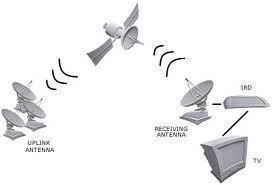How is a Satellite System Connected to a Television Set
Television has had a foothold in our society for decades and while many people still get their TV from cable companies, others are switching to satellite TV. Satellite TV provides customers with several important features that they cannot get from cable companies, the most important being the fact that satellite TV can provide television access to anywhere in the world while cable companies are limited to areas that they can run cables through. In this article, we will explore how satellite TV works so that you can understand what satellite TV is all about.
Programming Source
The programming source is where it all begins for both satellite and cable TV. A programming source is a channel or station that offers its services to television providers. Some of the most popular programming sources are Scifi (now spelled SyFy), Fox, CNN, Lifetime, USA, and TNT. Programming sources pay writers and producers to create television shows and movies so that there is always something to watch on their channel. Television providers pay programming sources for the right to air their content along with content from other programming sources and sell the combined content to their customers.
Broadcast Center
The broadcast center is the grand central for television signals. The programming source beams its signal to its own satellite and then directs it back down to the television provider’s broadcast center. The broadcast center then interprets the data from the signal and makes modifications before beaming the signal up to its own satellite and then back down to thousands or even millions of individual homes around the world.
Satellite
The actual satellites used in satellite TV are very important considering both the programming source and the broadcast center rely on them to transfer data across extremely far distances. While satellites are not perfect and their signal can be interrupted by cloud cover, atmospheric conditions, and solar flares, they are the best means of technology that we have right now to transfer data across long distances without using cables. Furthermore, the higher the number of signals from different satellites that your dish can pick up at the same time, the better the reception will be.
Satellite Dish
The satellite dish is the device that sits on top of your home and it is responsible for picking up signals from one or more satellites, depending on how many the company have in the area. A satellite dish is just a large antenna that has been specifically designed for picking up signals from space. Satellite dishes used to take up the majority of a roof or yard but, thankfully, technology has allowed for us to compress them into the relatively small size that they are in today.
Receiver
The receiver is a small, usually black, box that is connected to your television set and is responsible for receiving signals from your satellite dish and then decoding them so that your TV can understand what the data means. The receiver often allows you to connect multiple TVs to it so that you do not have to have a separate receiver in each room of your house. The receiver and the satellite dish make up the “equipment” that your satellite TV provider may or not charge you for. Considering that this is a large part of the service that they are providing you with, it should not be an extra fee.
Encoding
As explained earlier, the broadcast center manipulates the data from the programming source before it beams it up to its satellites. One of the ways that it manipulates the data is by encoding it. Encoding refers to both converting the data to the MPEG-4 (MP4) file format as well compressing the data as much as possible to make data transfers faster and have better quality. While each satellite TV provider has its own methods of encoding the data, the general idea is the same.
Encryption
Another way that the broadcast center manipulates the data from the programming source is by encrypting the data. Encryption refers to scrambling the data so that people cannot access it without paying for the service. Encryption also uses security keys so that even if someone knew how to unscramble the data, they would still have to figure out the password. Imagine taking a picture of a beautiful landscape and then cutting the picture into hundreds of little pieces. You then write a number on the back of each piece so that you know which order they go in and then you put all of the tiny little pieces into a locked safe. That’s what encryption is.


Comments - One Response to “How is a Satellite System Connected to a Television Set”
Sorry but comments are closed at this time.